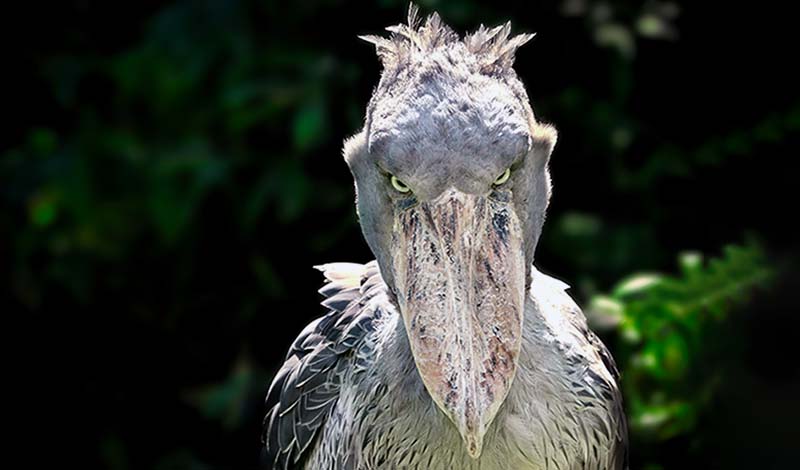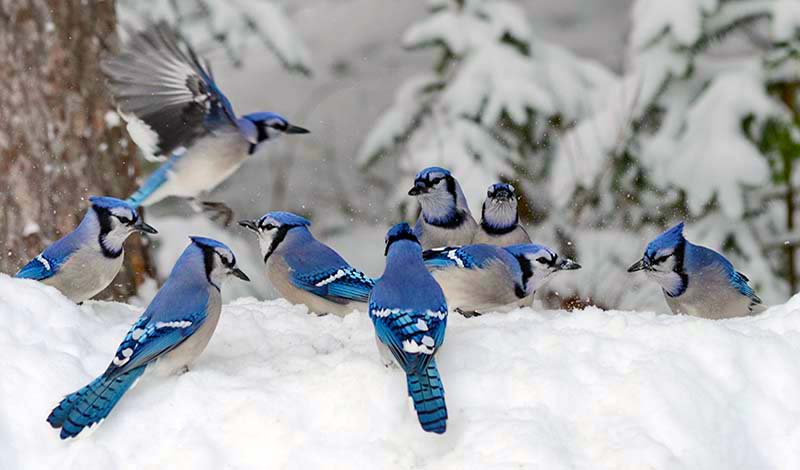
2.5-minute read
Well, I was there,
and I know what you did.
I saw it with my own two eyes.
Phil Collins
As far as crows are concerned, sharing a habitat with humans can be complicated. From the clever creatures’ perspective, we can be somewhat, well, unpredictable. Some of us are quite nice and obviously bird-friendly, and others demonstrate what can only be perceived as seriously anti-crow behavior. Researchers examining how crows learn to distinguish between goodies and baddies have discovered that crows never forget a dangerous face, and they’re not shy about cawing out bad behavior.
In a study designed to learn how crows respond to and communicate amongst themselves about potential stranger danger, behaviorists from the University of Washington wore fright masks while net capturing and banding crows before releasing them. When researchers reappeared in the vicinity of the crow community wearing the same fright masks, not only did the banded crows scold and mob the people they remembered to have caused them harm, the crow bystanders who had simply witnessed the capture of their mates also gave the baddies a good telling off.
Much the same way we humans learn whom to avoid based upon our negative interactions with them, observation of their mistreatment of others, and word of mouth from trusted sources, according to the Washington study, crows can tell people apart, remember harmful behavior, communicate their grievances, and share their knowledge about baddies with other birds in their flock.
As people and wildlife increasingly occupy the same environments, an animal’s ability to remember an individual’s actions to avoid potential threats will help them adapt to human behavior and increase their chances of survival in a rapidly changing world. Now, that’s something to crow about.

ICYMI Nature News
One in a Million Blue-Eyed Cicadas
As the billion-bug emergence unfolds across the country, some startled cicada watchers in Illinois have discovered a few of the typically red-eyed clicking critters peering at them with baby blue peepers. Take a look at the rare blue-eyed bugs here.
161 Sightings of Whales, Oh My!
A lucky group of marine researchers flying over the waters of southern New England on May 25 hit the jackpot whale-wise. According to the National Oceanic and Atmospheric Administration, 161 sightings of seven distinct species of whale, including endangered sei whales, were observed in a single flight. Read more about the big mammal bonanza here.
An Award-Winning Walking Tree
New Zealand has just crowned their 2024 Tree of the Year, and it’s got legs. The whimsically shaped flowering northern rātā is the last tree standing of a forest cleared 150 years ago, and the double-trunked lone survivor looks like it’s not sticking around to meet the axe. Check it out!
Flamingos Have All The Best Moves
Do you rely on signature moves on the dancefloor to work your special magic? Then you have a lot in common with flamingos. According to researchers studying the pretty-in-pink birds in the Mediterranean, flamingos use 136 different combinations of dance moves during courtship. Watch them strut their stuff.
Meet A Brand-New White Bison
Recent reports show Yellowstone is now home to an extremely rare new arrival. A white baby bison was spotted in the park in early June being nuzzled by its mother. The brand-new white buffalo calf is most likely not an albino but is most definitely adorable. Take a peek.
Favorite World Press Forest Update
For people and for wildlife, here’s the FWP forest carbon capture update from April 2022 through May 2024. The trees we’ve planted across 16 projects in 13 countries bring our carbon capture to 4,310 tons of C02. That’s equivalent to 11,023,116 miles driven by a gasoline-powered passenger vehicle, or 484,978 gallons of gasoline consumed, or 284,531,909 smartphones charged.




































































